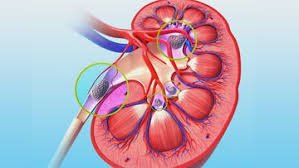Overview
Doxycycline is a commonly prescribed antibiotic used to treat infections such as respiratory, urinary, and skin infections. In Korea, healthcare providers educate patients about potential side effects, proper usage, and monitoring to ensure safe treatment outcomes.
What are Doxycycline Side Effects?
Doxycycline side effects are adverse reactions that may occur during or after taking the antibiotic. While generally safe when prescribed correctly, some individuals may experience mild to severe reactions affecting the digestive system, skin, or other organs.
Common Side Effects
- Nausea and vomiting
- Diarrhea
- Stomach pain or cramps
- Loss of appetite
- Sensitivity to sunlight (photosensitivity)
- Skin rash or itching
Serious Side Effects
- Severe allergic reactions (anaphylaxis)
- Liver toxicity
- Tooth discoloration in children
- Esophageal irritation or ulceration
- Blood disorders (rare)
Causes
- Allergic reaction to the antibiotic
- Interaction with other medications
- Pre-existing liver or kidney conditions
- Prolonged use or overdose
Risk Factors
- History of allergic reactions to tetracyclines
- Children under 8 years old
- Pregnant or breastfeeding women
- Pre-existing liver or kidney disease
- Concurrent use of other medications affecting liver function
Complications
- Severe allergic reactions requiring emergency care
- Gastrointestinal disturbances
- Photosensitivity leading to sunburn
- Long-term teeth or bone discoloration in young children
- Rare systemic effects like liver or blood abnormalities
Prevention
- Take doxycycline exactly as prescribed
- Avoid excessive sun exposure and use sunscreen
- Take medication with a full glass of water to reduce esophageal irritation
- Inform your doctor of any allergies or pre-existing conditions
- Avoid use in children under 8 unless specifically prescribed
Treatment Options in Korea
Medical Guidance
- Discontinuation of the drug if severe side effects occur
- Antihistamines or corticosteroids for allergic reactions
- Supportive care for gastrointestinal symptoms
- Monitoring of liver and kidney function during prolonged use
Alternative Therapies
- Switching to a different class of antibiotics if needed
- Supportive medications to reduce nausea, rash, or digestive issues
Follow-up and Support
- Regular check-ups if long-term therapy is required
- Education on safe antibiotic use and drug interactions
- Reporting adverse reactions to healthcare providers for monitoring













